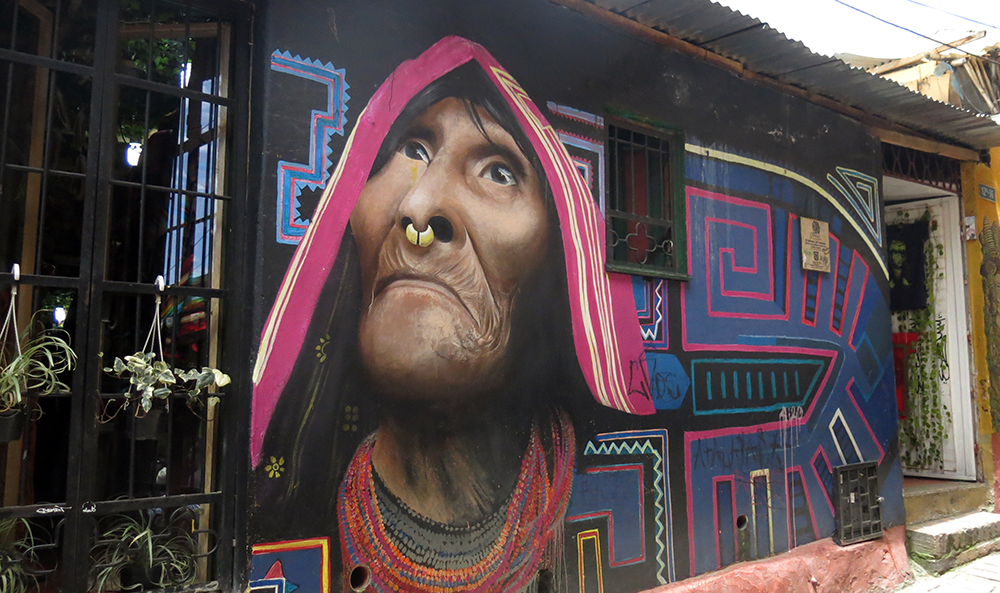
Our trip to Bogota to renew our Panamanian visae did not start too well. We decided to fly from Panama Pacifico airport which is on the west side of the Bridge of the Americas and much more convenient to reach from Vista Mar marina where we left Distant Drummer. When we went to check-in they refused to allow Neil to fly because he had a torn page in his passport, apparently the Colombian immigration will not accept damaged passports. This seemed unbelievable as we had flown all over Europe just six months ago, but they were adamant. So I ended up flying to Bogota on my own for a week while Neil spent a couple of stressful days at the Australian Consulate in Panama City sorting out a new passport.
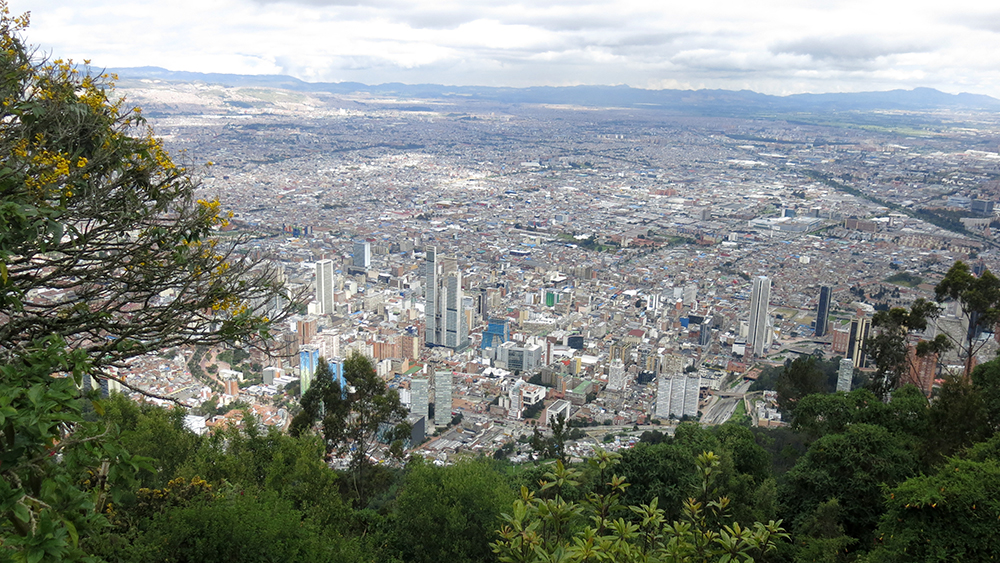
Not long ago Colombia was the world’s most violent country so I was a little uneasy about travelling there alone. However in the last ten years the situation has improved considerably: the drug cartels have been virtually wiped out, the government have signed a peace agreement with FARC and the murder and kidnapping rates have plummeted. A strong police presence keeps the cities secure (or at least the parts a tourist is likely to visit) so I figured if I applied the same common sense that I use in any other big city, I should be fine.
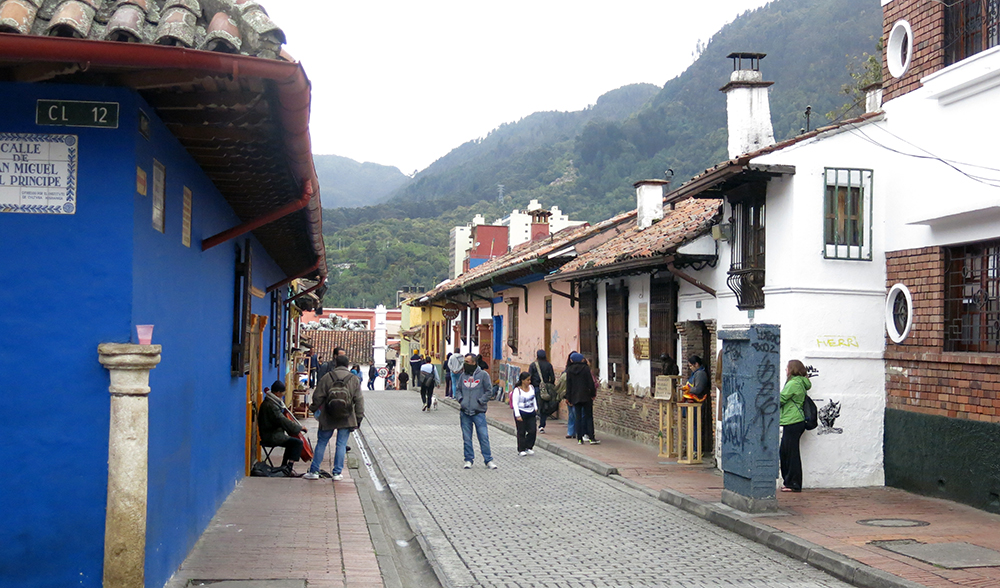
I stayed in the La Candelaria district where the sprawl of the city laps against the adjacent mountains. Many of the small, brightly painted houses which line the steeply sloping streets have been converted into restaurants, shops and hostels. Heading downhill the houses get larger culminating in the Plaza Bolivar which hosts the Catherdral, the Palace of Justice and various other important buildings. I spent many happy hours exploring the streets, people watching and checking out the arts and crafts for sale on blankets on the pavement.
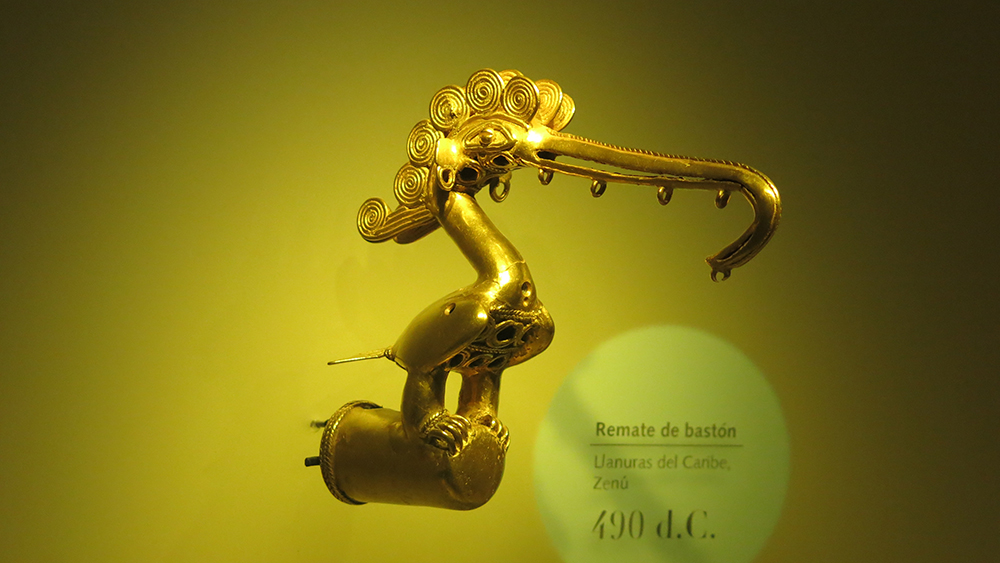
La Candelaria is the oldest part of Bogota, it’s a boho, arty area and is home to several universities, galleries and museums. One of the most famous attractions is the Gold Museum which houses a massive collection of gold artifacts created by the various indigenous groups that inhabited pre-Hispanic Colombia. The displays included beautifully crafted masks and jewellery, figurines of humans and animals including frogs, jaguars and bats. The nose-rings were amazing; 10cm wide plates of gold embossed, carved and decorated with rings, which were hung from the nose representing status as well as confering the wearer with divine powers.
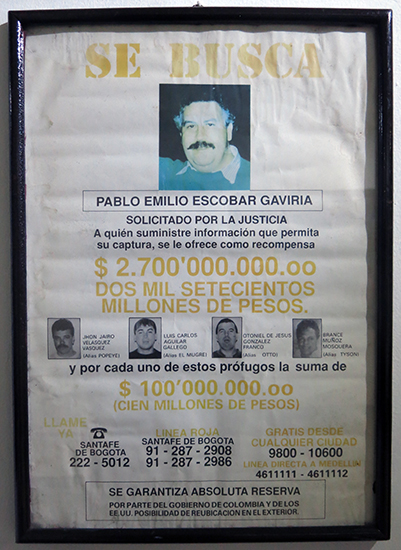
I also visited the Police Museum as I wanted to see the display dedicated to their operations involving the drug cartels and the guerilla activities. The exhibits include the wanted poster for Pablo Escobar, the Harley Davidson (which he gave to his cousin), his Raybans and some rather graphic images of his “neutralisation” as they call it. The tour in English was essential as the exhibits were in Spanish and were pretty sparse in detail, and the police officer who showed us around also told us a lot about living in Colombia today.
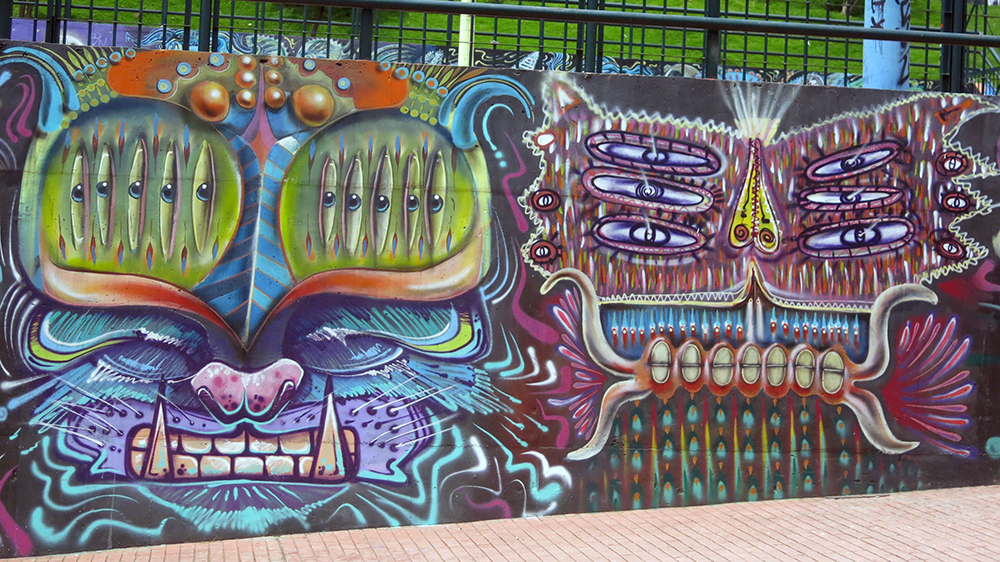
Having tired of visiting museums, wandering through the neighbourhood and drinking coffee I took a food and grafitti tour. I was introduced to tamales from Tolima and arequipe, a kind of soft, sticky fudge as well as a huge range of tropical fruit for which Bogota is quite famous. In certain areas of the city graffiti has been legalized and the walls are painted with fantastically diverse and colourful murals. Artists come from all over the world to decorate the walls of Bogota, I love graffiti as an artform and really admired their skill and imagination.
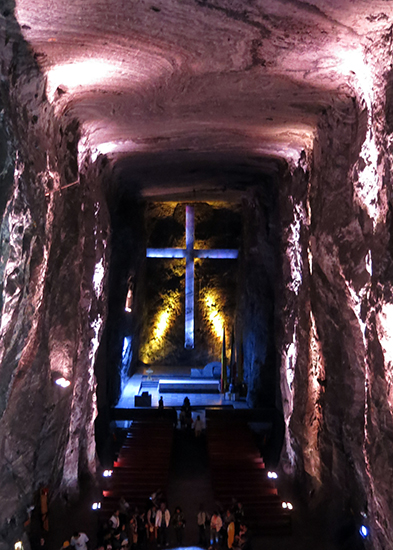
One day I took a bus out of the city to the town of Zipaquira where an old salt mine has been converted into an underground cathedral. Along the entrance tunnel several small chapels have been carved out of the halite and creatively lit representing Jesus’ last journey to Calvary for crucifixion. The tunnel leads to three large caverns where mass is held every Sunday for hundreds of pilgrims. It’s a pretty impressive place but what really fascinated me was the swirling shapes of the diapirs in the walls and roofs of the caves where the salt had flowed as it was buried – it was like being inside a salt dome.
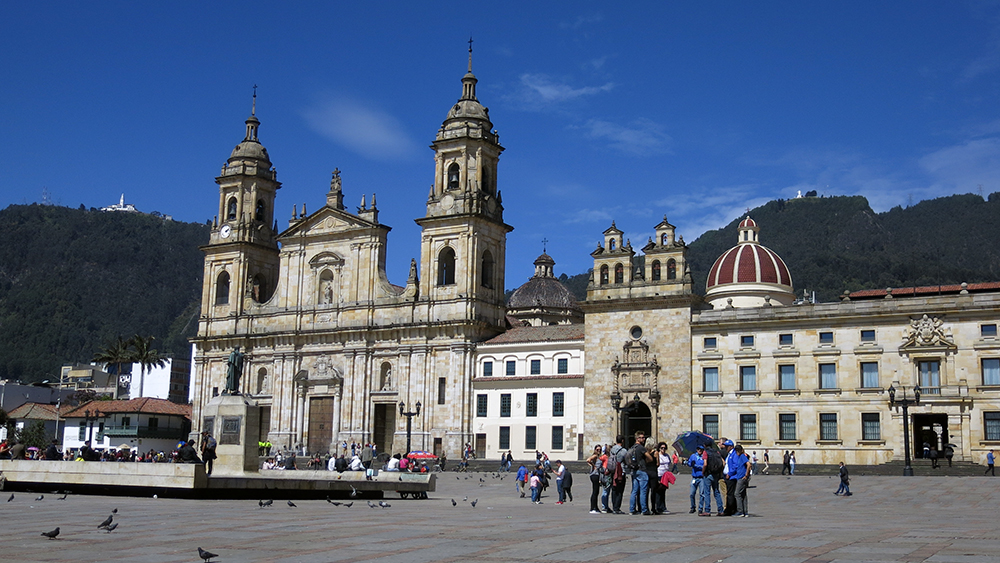
After six days I was looking forward to getting home. I was missing my sweetie pie and it was pretty chilly up in the Andes so I was keen to get back into the hot Panamanian sunshine. I had no problems with immigration coming into Panama and was issued with another six months visa – mission accomplished! A couple of days after I returned I celebrated my birthday. Neil spoiled me rotten and in the evening a crowd of cruising friends gathered for drinks on board Distant Drummer. It was good to be back.
Suzy
